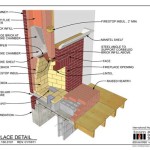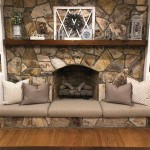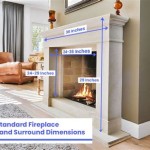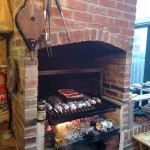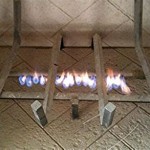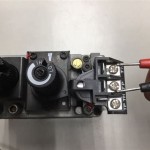Wall Mounted TV Above Fireplace Ideas: Balancing Aesthetics and Functionality
Mounting a television above a fireplace has become a popular design choice in many homes. This arrangement offers a focal point for both entertainment and ambiance. However, effectively integrating these two elements requires careful consideration of multiple factors to ensure a visually appealing and functionally sound setup. Aspects such as viewing angle, heat exposure, cable management, and structural support all require evaluation before proceeding.
Optimal Viewing Angle Considerations
One of the primary concerns when placing a television above a fireplace is the resulting viewing angle. A high mounting position can lead to neck strain and discomfort over extended viewing periods. Ideally, the center of the television screen should be at or slightly below eye level when seated. To determine if the proposed location is suitable, measure the distance from the seating area to the fireplace and estimate the height of the television's center point. Experiment with different seating positions and viewing angles to assess potential discomfort. Tilting mounts can partially mitigate the effects of a high mounting position by angling the screen downwards. However, excessive tilting can distort the image and introduce glare. Careful planning and assessment are essential to find a balance between aesthetics and ergonomic comfort.
Room dimensions also play a crucial role in determining the optimal viewing height. In smaller rooms, the viewing distance is shorter, which can exacerbate the effects of a high mounting position. Conversely, larger rooms provide greater flexibility in terms of height as the viewing distance compensates for a steeper viewing angle. Before committing to a specific mounting location, consider temporarily propping the television in place with the assistance of another person or a sturdy support structure. This allows for a realistic assessment of the viewing experience from different locations within the room. Employing temporary solutions can reveal potential issues before permanent installation, saving time, effort, and potential frustration.
Managing Heat Exposure
Heat generated by the fireplace poses a significant threat to the longevity and performance of a television mounted above it. Electronic components are sensitive to high temperatures, and prolonged exposure can lead to overheating, reduced lifespan, and even permanent damage. The amount of heat produced by the fireplace and the effectiveness of the chimney or ventilation system directly impact the potential risk. Gas fireplaces typically generate less heat than wood-burning fireplaces, but even gas models can produce enough heat to affect the television. Before installing the television, assess the heat output of the fireplace by operating it for an extended period and monitoring the temperature above the mantel. If the mantel is significantly warmer than the surrounding area, additional measures may be necessary to mitigate heat exposure.
Installing a deep mantel or constructing a recessed alcove above the fireplace can provide a buffer zone that deflects heat away from the television. A non-combustible mantel made of materials like stone, brick, or metal offers better heat resistance than a wood mantel. Furthermore, incorporating ventilation features into the alcove design can help dissipate heat and prevent it from accumulating around the television. Consider installing heat shields or reflective barriers behind the television to further reduce heat absorption. Continuously monitoring the temperature around the television, especially during fireplace operation, is crucial. If excessive heat is detected, discontinue fireplace use until appropriate mitigation measures are implemented.
Cable Management and Concealment
Effective cable management is crucial for achieving a clean and visually appealing installation. Exposed cables detract from the overall aesthetics and create potential tripping hazards. Concealing cables within the wall is the most desirable solution, but it requires careful planning and may necessitate the assistance of a qualified electrician or contractor. Before running cables through the wall, ensure that all local building codes and regulations are followed. Use in-wall rated cables that are specifically designed for this purpose to prevent fire hazards. Consider installing a conduit or flexible tubing within the wall to facilitate future cable changes or upgrades.
Various cable management solutions are available for situations where in-wall wiring is not feasible. Cable concealer kits, which consist of paintable plastic channels, can be used to hide cables along the wall surface. These kits offer a simple and cost-effective way to minimize the visibility of cables without requiring extensive construction work. Alternatively, furniture designed with built-in cable management systems can provide a convenient and discreet way to route cables from the television to connected devices. Regardless of the chosen method, meticulous planning and attention to detail are essential for achieving a finished look that complements the overall design of the room. Taking some extra time to plan for this can allow for cleaner lines across your design.
Structural Support and Mounting Considerations
Ensuring adequate structural support for the television is paramount to prevent it from falling and causing damage or injury. The weight of the television, the type of wall construction (e.g., drywall, brick, concrete), and the mounting hardware all factors influence the strength and stability of the installation. Locate wall studs using a stud finder and securely attach the mounting bracket to the studs using appropriate hardware. If studs are not conveniently located, toggle bolts or molly bolts can be used to anchor the bracket to drywall. However, these anchors have lower weight capacities than stud-mounted installations and should only be used for lighter televisions. For brick or concrete walls, use masonry anchors specifically designed for these materials.
Select a mounting bracket that is compatible with the television's VESA (Video Electronics Standards Association) mounting pattern and has a weight capacity that exceeds the television's weight. Tilting mounts offer flexibility in adjusting the viewing angle, while full-motion mounts allow for a wider range of movement and positioning. However, full-motion mounts typically have lower weight capacities than fixed mounts. Before proceeding with the installation, consult the television's owner's manual and the mounting bracket's instructions for specific recommendations and safety precautions. If unsure about your ability to safely and effectively install the television, seek the assistance of a professional installer. They will be familiar with best practices and be able to provide any additional hardware needed.

Can I Mount My Tv Above The Fireplace

S And Chaos The Tv Wall Mount Is Done Living Room Over Fireplace Above

Can You Put A Tv Over Fireplace Direct Fireplaces

Safely Mount A Tv Above An Electric Fireplace Touchstone Home S Inc

Putting A Tv Above The Fireplace May Not Be Such Bad Idea After All

Installing A Tv Above The Fireplace

Pin On Home Decor Ideas

Tv Wall Mount Installation With Wire Concealment Over Fireplace

Matching Your Tv Size To Fireplace

Stop Hanging Your Television Over Fireplace

